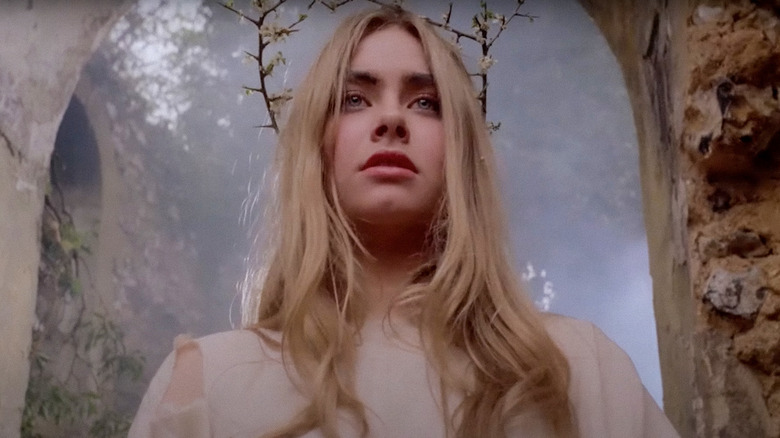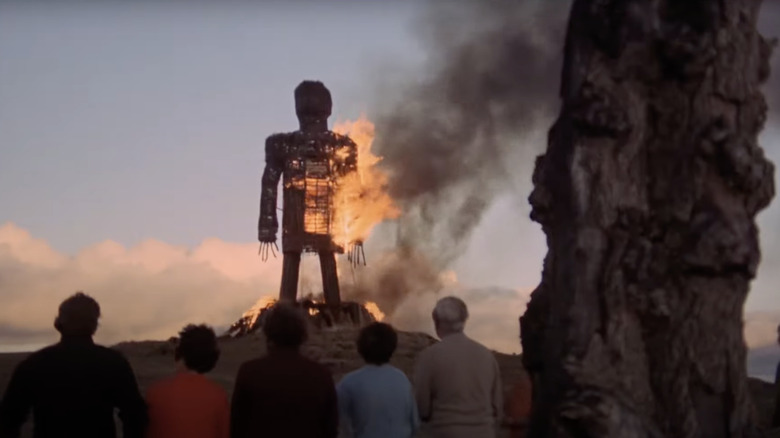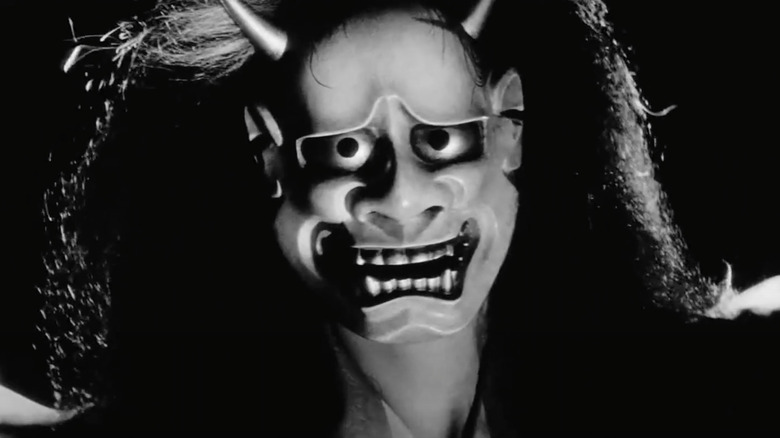The Daily Stream: Woodlands Dark And Days Bewitched Will Have You Drawing Up A Folk Horror Watchlist
(Welcome to The Daily Stream, an ongoing series in which the /Film team shares what they've been watching, why it's worth checking out, and where you can stream it.)
The Movie: "Woodlands Dark and Days Bewitched: A History of Folk Horror"
Where You Can Stream It: AMC+, Shudder
The Pitch: The folk horror sub-genre gets the documentary treatment in a film tracing it from its "Wicker Man"-era roots to its more recent revival in movies like "Midsommar."
Directed by Kier-La Janisse, "Woodlands Dark and Days Bewitched" hit Shudder last month and it really drove home the point to me that as much as I might know about movies, I have only skimmed the surface of some genres. Until a few years ago, I think I lacked the right vocabulary to even conceptualize what "folk horror" was. Yet as I watched this documentary, I experienced an awakening akin to the "you've always been here" moment in "The Shining." I realized that I had long been a big fan of folk horror without even knowing it or having the name to put to that thing.
One of the interviewees in this documentary suggests that folk horror isn't truly a sub-genre so much as a set of concerns. Often, those concerns involve secret cults and human sacrifice. They're by no means limited to film, as you may have seen them at play in short stories like Shirley Jackson's "The Lottery" and Stephen King's "Children of the Corn."
In the new millennium and especially the pandemic, we inhabit these online "pseudo-communities," as another interviewee calls them. We're more connected to information than ever before, but at the same time, we remain disconnected from each other. The desire to reconnect with people and nature, juxtaposed with dread at the sight of "the old ways," can find expression in folk horror.
Why It's Essential Viewing
Let's say you're like me and have, to this point, only cultivated a superficial knowledge of folk horror's greatest hits. You know your recent stuff from such luminaries as Ari Aster and Robert Eggers (the latter of whom is yet another interviewee here), but now, you're looking to go deeper into the woods.
"Woodlands Dark and Days Bewitched" is educational and it offers a good go-to guide. Being able to watch it and see glimpses of the imagery from certain films, coupled with insightful commentary, makes it more visually and intellectually engaging than if you were just reading about them on Wikipedia, let's say.
Forget about passive, vegetative infotainment. What you flower-headed Maypole dancers need to do (if you're in the folk horror mood) is set aside some time to watch this documentary, then maybe go back and rewatch parts of it and take some notes. Just let this thing actively engage your brain as an armchair horror ethnographer and film historian.
I would venture to say that "The Wicker Man" probably has the most mainstream recognition of any folk horror film out there. Yet even that film only makes up one third of what genre fans have come to regard as the "Unholy Trinity" of folk horror movies. "The Wicker Man" first screened in 1973 and it was preceded by both "Witchfinder General" (1968) and "Blood on Satan's Claw" (1971). Even as I type that, I am aware that this may be a statement of the obvious for cinephiles with a good working knowledge of the canon.
If you're looking to know more about horror cinema's folk strand and come away with some viewing recommendations, the sheer breadth of films on display in "Woodlands Dark and Days Bewitched" could be daunting for a newbie. Where to even begin, with all the names it drops? For me, at least, a good way into it is by latching onto one specific country as the 3-hour doc works its way outward from Britain and M.R. James adaptations and gives its prospectus of "culturally specific manifestations in American, Asian, Australian, and European horror.
In the Susuki Grass with the Folk Horror of Japan
Of particular interest to me, since I live in Japan, are the Japanese films mentioned in "Woodlands Dark and Days Bewitched." Two of these films, "Kakashi" and "Noroi: The Curse," I had already seen (and in the case of the latter film, written about for /Film). The reputation of other titles, like "Kwaidan," "Kuroneko," and especially "Onibaba," preceded them. Yet there were still other titles with names that were foreign to me, like "100 Monsters," "Curse of the Dog God," "Mansion of the Ghost Cat," and "Shikoku."
While Shikoku is the only one of Japan's four main islands that I haven't visited yet, I did edit a bunch of signs and pamphlets for one of the largest cities, Tokushima, during the first year of the pandemic. So, between that and a certain Hayao Miyazaki deep cut, I had a leg up on what some of those other lesser-known titles featured in "Woodlands Dark and Days Bewitched" might be about.
Oddly enough, the concept of the hyakki yagyō ("night parade of one hundred demons"), which is basically the equivalent of pandemonium or all hell breaking loose in Japanese folkore, figures into Miyazaki's "Pom Poko." Though you won't see it or any of Miyazaki's other anime films in this documentary, some of them, such as "Pom Poko" and "Princess Mononoke," could almost be classified as softcore folk horror, with their perennial concern over the city encroaching on the countryside and coming up against forest spirits. As a critic for the Bangkok Post put it in a review of "The Medium" (also available to stream on Shudder), "Southeast Asian horror has always been folk horror."
You've always been here. All in all, watching "Woodlands Dark and Days Bewitched" was a humbling experience that made me realize I still have a lot to learn outside my usual comfort zone of movie genres. It's easy to be an expert in 21st-century superhero films, but if you're looking to dig into a new genre or just learn more than you already know about one, "Woodlands Dark and Days Bewitched" gives a good overview of a cinematic tradition that goes far beyond "The Wicker Man" and is much more extensive than what we saw in the 2010s with the likes of "Midsommar."


